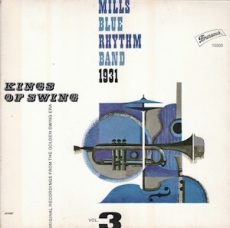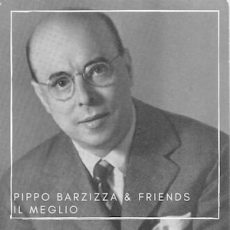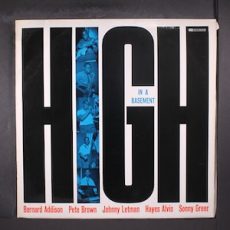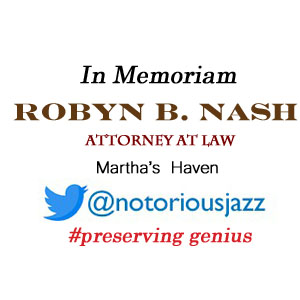
Daily Dose Of Jazz…
Horace Kirby Dowell, known professionally as Saxie, was born on May 24, 1904 in Raleigh, North Carolina. Attending the University of North Carolina he met Hal Kemp and joined Kemp’s orchestra as a tenor saxophonist, clarinetist, flutist and vocalist in the fall of 1925.
He composed I Don’t Care, which was recorded by Kemp for Brunswick in 1928. When the band’s style changed in the early 1930s to that of a dance band, Dowell became the group’s comedic vocalist for novelty songs. After Three Little Fishies became a hit in 1939, Dowell was involved in a legal dispute with lyricists Josephine Carringer and Bernice Idins. In 1940 he wrote the song Playmates.
Dowell left Kemp and started a big band in 1940. Drafted during World War II he served as a bandleader aboard an aircraft carrier, the U.S.S. Franklin. He went on to record for Brunswick, Sonora, and Victor. Around 1946 he led a naval air station band with 14-year-old Keely Smith as a singer.
>After the war he reunited his orchestra, performing mostly in Chicago, Illinois. In 1949 he became a disc jockey for WGN radio in Chicago, and retired in the late 1950s. He moved to Scottsdale, Arizona and worked as a disc jockey part-time for KTAR in Phoenix during his retirement.
Saxophonist and vocalist Saxie Dowell died on July 22, 1974 in Scottsdale.
More Posts: bandleader,history,instrumental,jazz,music,saxophone,vocal

Daily Dose Of Jazz…
Theodore McCord was born May 17, 1907 in Birmingham, Alabama and was the twin brother of Castor McCord, also a reedist. While both brothers played tenor saxophone and clarinet, in addition Ted played alto saxophone.
As a student at Wilberforce University in the 1920s, he played in a student group led by Horace Henderson. He also played in Edgar Hayes’s group, the Blue Grass Buddies, and the McKinney’s Cotton Pickers and the Mills Blue Rhythm Band.
He can be heard playing on their sessions with Louis Armstrong. Other credits include recordings with King Carter and the singer Ollie Shepard.
Roping out of music in the Forties, saxophonist Ted McCord, who was principally active in the 1920s and 1930s, his date and place of his death is unknown.
More Posts: clarinet,history,instrumental,jazz,music,saxophone

Daily Dose Of Jazz…
Giuseppe “Pippo” Barzizza was born on May 15,1902 in Genova, Italy. He was a child prodigy and at age six he entered the Camillo Sivori Institute to study violin, quickly passing the exam and taking his first award. He could hardly read words but he was already able to write a Mozart symphony without error.
After attending primary and secondary schools he went to Cristoforo Colombo High School, where he studied violin at the Conservatory. Listening to his father’s phonograph, Pippo developed a passion for classical and symphonic music. He became skilled in mathematics and decided to follow mathematical studies, graduating as an engineer.
Barzizza also studied harmony, counterpoint, composition, and instruments. He focused on the piano until 1933, followed by the violin, banjo and the trumpet section. During this period he was the lead violinist at Politeama and performed music for silent movies at the cinema near his home.
By seventeen he had stopped his violin studies for the pursuit of conducting and composition. For the next four years he performed on ships and for orchestras in Genova. However, it was in New York City he first heard jazz and swing music. Through the 1920s Pippo became a skilled arranger, joined an orchestra, served in the Italian Army and founded a military orchestra.
His first line up was playing violin for Blue Star Orchestra, then he conducted the Cetra Orchestra, recorded during the Thirties for Fonit, Columbia, La Voce del Padrone, Odeon, Brunswick and Fonotipia record labels. Post World War II he played on soundtracks and counducted the Modern Orchestra. Retiring from music in 1960 he taught music, established a recording studio in his home
At the age of 92, composer, arranger, conductor and music director Pippo Barzizza, who was active from 1924 to 1960 playing violin, piano, saxophone, banjo, and accordion, died on April 4,1994 in Sanremo, Italy.
More Posts: accordion,arranger,bandleader,banjo,composer,conductor,piano,saxophone,violin

Daily Dose Of Jazz…
Bernard Sylvester Addison was born on April 15, 1905 in Annapolis, Maryland. At an early age, he learned mandolin and violin, and after moving to Washington, D.C. in 1920 he played banjo, initially with Claude Hopkins.
Moving to New York City he worked with Sonny Thompson and recorded for the first time in 1924. During the 1920s, he dropped the banjo for the acoustic guitar. The 1920s and 1930s saw Bernard playing with Louis Armstrong, Adelaide Hall, Fletcher Henderson, Bubber Miley, Art Tatum, and Fats Waller. Addison recorded with Red Allen, Coleman Hawkins, Horace Henderson, Freddie Jenkins, Sara Martin, Jelly Roll Morton, and Mamie Smith.
In 1936, John Mills of the Mills Brothers died, and Addison replaced him on guitar. For two years he toured and recorded with the Mills Brothers, increasing his popularity. After departing the Mills Brothers, he had little trouble finding work. He went on to record with Benny Carter and Mezz Mezzrow.
He played with Stuff Smith and recorded with Billie Holiday. In 1940, he recorded with Louis Armstrong and Sidney Bechet. He began to lead bands until he was drafted during World War II. In the late 1950s, he reunited with Henderson and played guitar for the Ink Spots. He performed at the Newport Jazz Festival with Eubie Blake in 1960 and recorded a solo album as a leader, Pete’s Last Date, and unfortunately was reissued under the name of saxophonist Pete Brown.
Guitarist Bernard Addison, who spent the remaining thirty years of his career teaching, died on December 18, 1990 at 85 in Rockville Centre, New York.
More Posts: guitar,history,instrumental,jazz,music

Daily Dose Of Jazz…
Andrew Morgan was born on March 13, 1901 in Pensacola, Florida. He played clarinet with the Imperial Band in the mid-1920s and then joined his brother Isaiah Morgan’s band in 1925. Sam Morgan led this ensemble for its recordings in 1927.
Heading to New Orleans, Louisian he played in the late 1920s and 1930s with Kid Howard, Kid Rena, and Kid Thomas Valentine. In the 1940s he and Isaiah played together again in Biloxi, Mississippi, then moved back to New Orleans to play with Alphonse Picou, Kid Rena again, Herb Morand from 1946 to 1952 and Kid Clayton from 1952.
He played with Percy Humphrey in 1953 and with the Young Tuxedo Brass Band and led the group after 1964. From 1958 he played Sweet Emma Barrett, Kid Howard again, Alvin Alcorn, Onward Brass Band, Eureka Brass Band, and Captain John Handy.
Clarinetist and saxophonist Andrew Morgan, who recorded once as a leader for his 1969 album Down By the Riverside, died in New Orleans, Louisiana at the age of 71 on September 19, 1972.
More Posts: bandleader,clarinet,history,instrumental,jazz,music,saxophone




